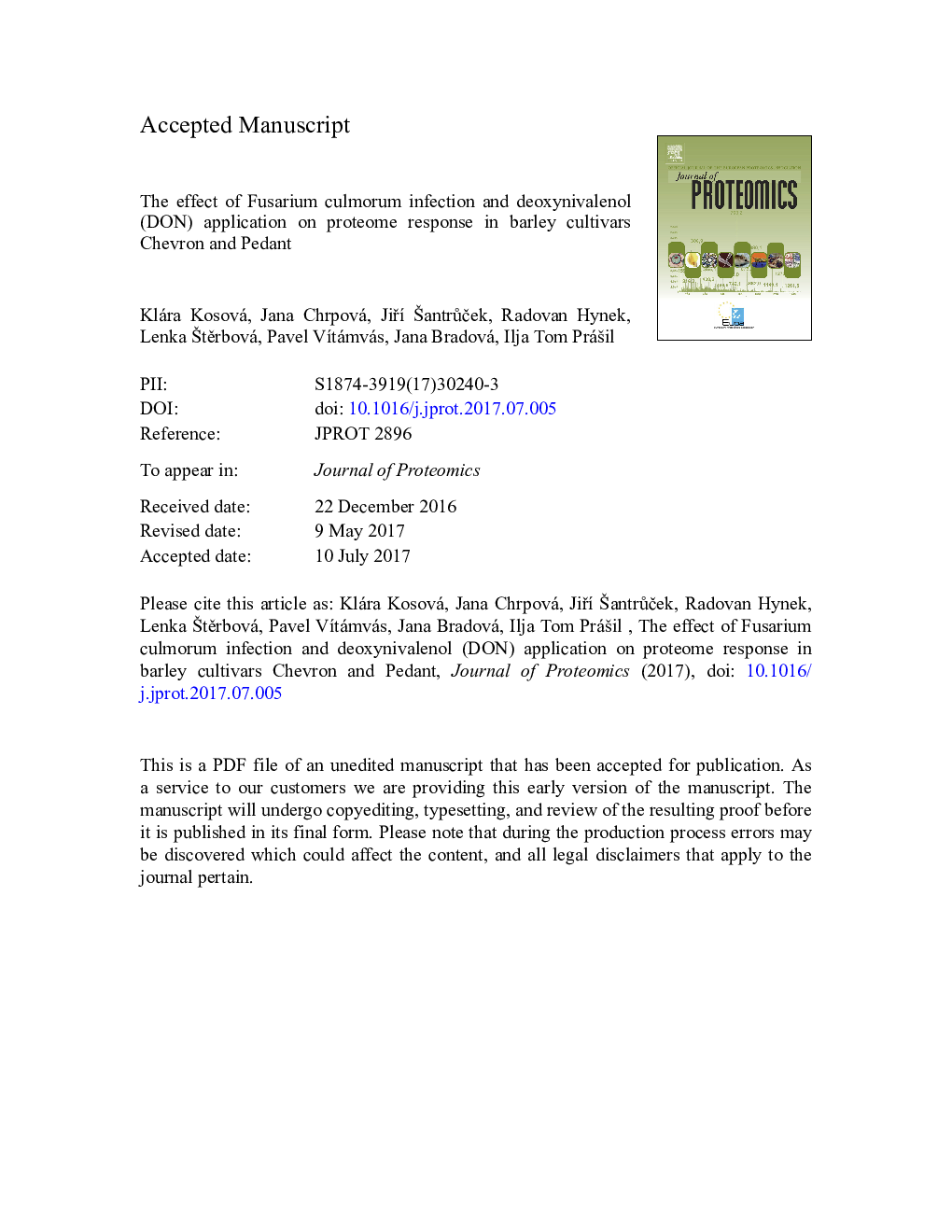| Article ID | Journal | Published Year | Pages | File Type |
|---|---|---|---|---|
| 7633994 | Journal of Proteomics | 2017 | 41 Pages |
Abstract
Fusarium head blight (FHB) disease adversely affects grain quality and final yield in small-grain cereals including barley. In the present study, the effect of an artificial infection with Fusarium culmorum and an application of deoxynivalenol (DON) on barley spikes of cultivars Chevron and Pedant during flowering was investigated at grain mid-dough stage (BBCH 73) 10 days after pathogen inoculation (10 dai). Proteomic analysis using a two-dimensional differential gel electrophoresis (2D-DIGE) technique coupled with LC-MS/MS investigated 98 protein spots revealing quantitative or qualitative differences between the experimental variants. Protein functional annotation of 93 identified protein spots revealed that most affected functional groups represent storage proteins (globulins, hordeins), followed by proteins involved in carbohydrate metabolism (α-amylase inhibitor, β-amylase, glycolytic enzymes), amino acid metabolism (aminotransferases), defence response (chitinase, xylanase inhibitor, serpins, SGT1, universal stress protein USP), protein folding (chaperones, chaperonins), redox metabolism (ascorbate-glutathione cycle), and proteasome-dependent protein degradation. The obtained results indicate adverse effects of infection on plant proteome as well as an active plant response to pathogen as shown by enhanced levels of several inhibitors of pathogen-produced degradation enzymes (α-amylase inhibitor, xylanase inhibitor, serpins), chaperones, and other stress-related proteins (SGT1, USP). Genotypic differences were found in hordein abundance between Chevron and Pedant.
Related Topics
Physical Sciences and Engineering
Chemistry
Analytical Chemistry
Authors
Klára Kosová, Jana Chrpová, JiÅà ŠantrůÄek, Radovan Hynek, Lenka Å tÄrbová, Pavel VÃtámvás, Jana Bradová, Ilja Tom PráÅ¡il,
